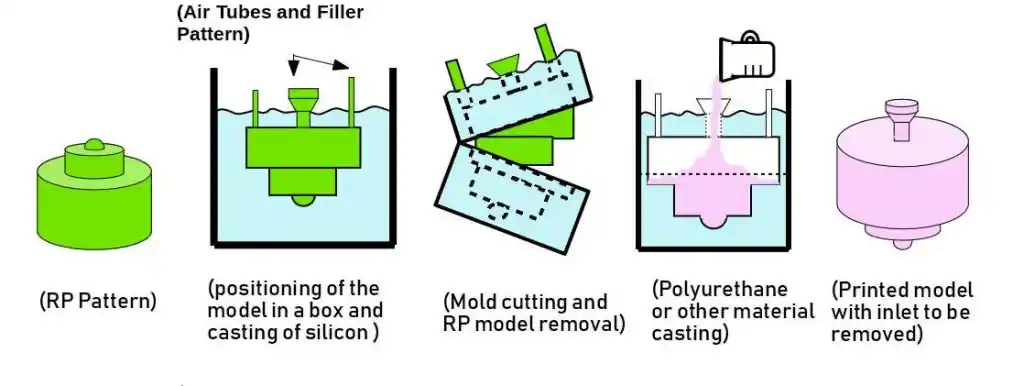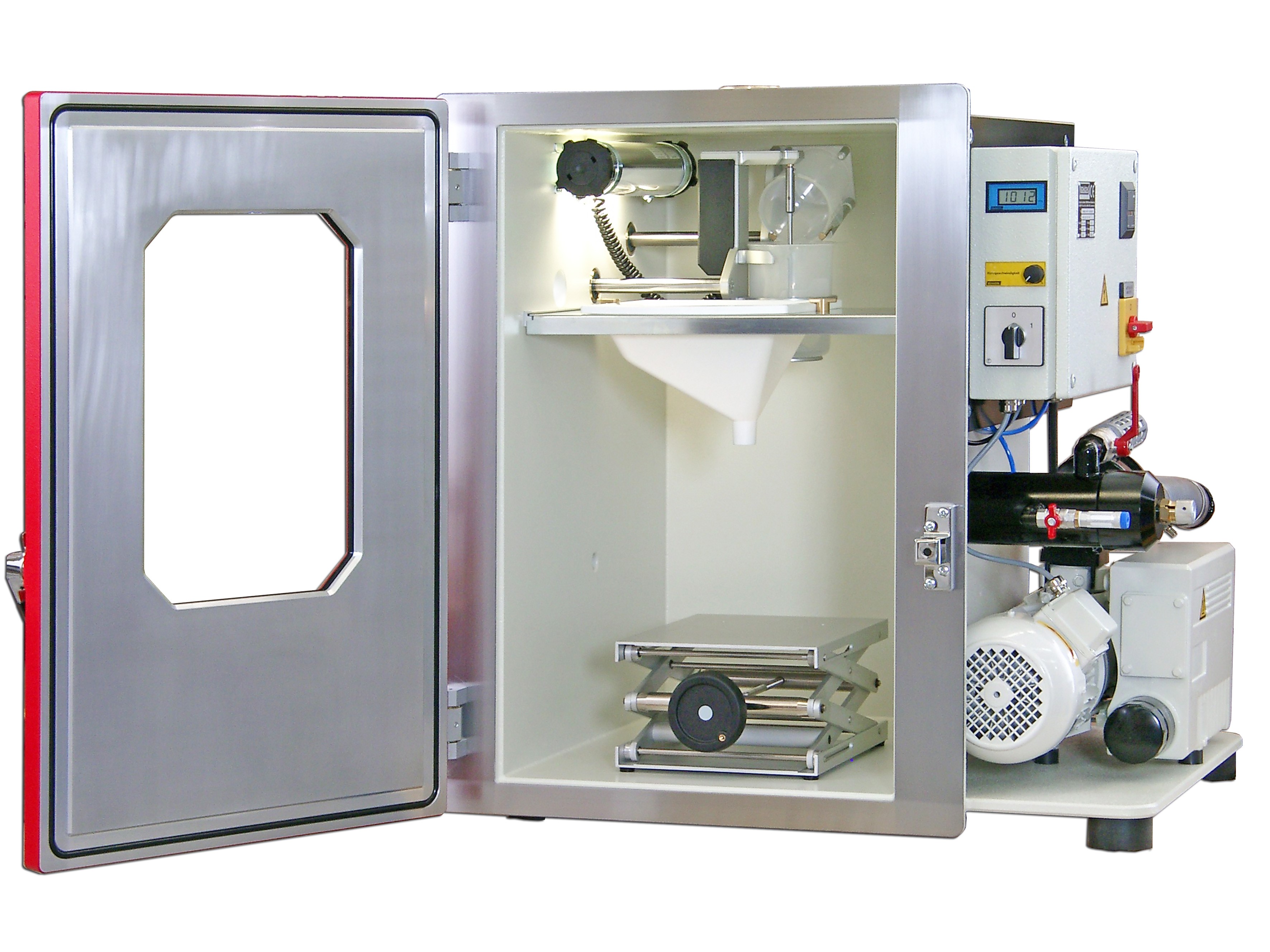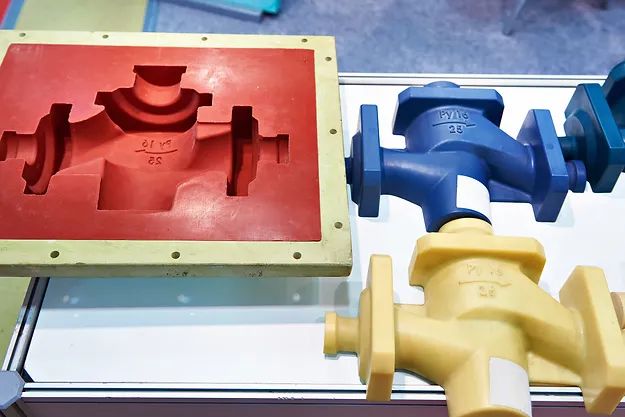Everything You Need to Know About Vacuum Casting

A comprehensive guide to vacuum casting, covering the full process, applications, benefits, and the key materials used.
Introduction to Vacuum Casting
What is Vacuum Casting?
Vacuum casting is a way to make plastic or rubber parts by copying a model. The model is usually made using 3D printing or a machine. In vacuum casting, a vacuum is used to pull liquid material into a silicone mold, which then hardens into the final shape.
This process helps create parts with complex shapes and details, making it perfect for high-quality prototypes and working parts. First, a master model is made, which is then used to create a mold that can make multiple identical parts.
Definition of Vacuum Casting
Vacuum casting is a method that uses a vacuum to pull liquid material into a mold, allowing it to copy the master model exactly. This method is mostly used to make plastic or rubber parts, especially for prototypes and small production runs.
Historical Development of the Technology
Vacuum casting was invented in the mid-20th century as an easier way to make molds. It was first used in industries like car manufacturing and aerospace to make prototype parts.
Over time, improvements in materials and molding techniques have made vacuum casting a reliable and cost-effective way to make detailed prototypes and small production runs.
Why Use Vacuum Casting?
Vacuum casting is mainly used for creating prototypes and small production runs. It is good for making a small number of parts quickly and at a lower cost compared to other methods like injection molding. The process allows designers to test parts before starting large-scale production, which saves time and money.
Vacuum casting also produces very detailed parts that look and feel like the final product. With vacuum casting, different materials can be used to mimic the properties of the final part, which helps in testing and demonstrations.
How Vacuum Casting Works

Source: Marmax Design
Step-by-Step Explanation of the Vacuum Casting Process
Master Model Creation: The process starts by making a master model, usually with 3D printing or CNC machining. This model serves as a reference for making the final part.
Mold Making: A silicone mold is made by pouring liquid silicone around the master model. When the silicone hardens, it forms a mold that captures all the details of the master model.
Mold Preparation: After the silicone mold has hardened, it is cut open to remove the master model. This leaves a cavity in the shape of the part. The mold is prepared for casting by adding channels for the material to flow and for air to escape.
Mixing and Degassing the Material: The casting material, like polyurethane resin, is mixed thoroughly. Then, it is placed in a vacuum chamber to remove any air bubbles that might affect the quality of the final part.
Casting Under Vacuum: The silicone mold is put in a vacuum chamber, and the liquid material is poured into the mold cavity. The vacuum helps the material fill all areas of the mold, avoiding air pockets and ensuring high-quality parts.
Curing: The filled mold is left to harden, either at room temperature or in an oven, depending on the material. This allows the material to take the shape of the mold.
Demolding: Once the material has hardened, the mold is opened, and the finished part is removed. The silicone mold can be used multiple times to make identical copies of the part.
Vacuum Casting Machine

Source: multistation.com
The vacuum casting machine is an essential piece of equipment for the vacuum casting process. It helps create the vacuum environment required to properly draw the liquid material into the mold and ensure high-quality results. The vacuum casting machine typically includes:
Vacuum Chamber: This component creates a low-pressure environment that removes air bubbles from the liquid material, ensuring that the material fills all areas of the mold properly.
Mixing and Degassing System: The machine often comes equipped with a system to mix the resin and remove air bubbles before casting, which helps maintain the quality of the final part.
Control System: The machine has controls that allow the operator to set the vacuum level, timing, and other parameters to ensure consistent quality in each casting cycle.
Materials Used in Vacuum Casting
Types of Materials
Polyurethane Resins: Polyurethane resins are popular for vacuum casting because they are very flexible and can mimic the properties of many different types of plastic. They can create both hard and flexible parts, making them a versatile choice for many applications.
Silicone Molds: Silicone is used for creating molds in vacuum casting because it can capture very fine details from the master model. Silicone is also flexible, making it easier to remove the final part without breaking the mold. This helps produce parts with a high-quality finish.
Material Characteristics
Flexibility: Polyurethane resins can vary in flexibility, allowing parts to be either rigid or soft. This is useful when parts need to bend or flex during use.
Hardness: The hardness of the final part can be adjusted by selecting different types of polyurethane resins. This allows for a wide range of parts, from soft rubber-like pieces to hard plastic components.
Thermal Resistance: Some polyurethane resins have good thermal resistance, which means they can withstand higher temperatures. This is important for parts that may be exposed to heat.
When to Use Each Type of Material:
Polyurethane Resins are best used when you need parts that closely mimic the properties of production plastics, especially for testing and prototyping. They are also ideal for parts that need to be flexible or have specific mechanical properties.
Silicone Molds are used for creating the actual mold in the vacuum casting process. They are ideal when high detail and accuracy are required, as well as for creating molds that can be reused multiple times for small production runs.
Advantages and Disadvantages of Vacuum Casting
Advantages of Vacuum Casting
Cost-Effectiveness: Vacuum casting is a cost-effective way to make small batches of parts. It is cheaper than methods like injection molding, which makes it a good choice for prototypes and low-volume production.
Precision and Detail: The process creates highly detailed parts, making it great for prototypes that need to look like the final product.
Material Versatility: Many different materials can be used, allowing parts to have different properties like flexibility, hardness, or heat resistance.
Short Lead Times: Vacuum casting can make parts quickly, which is helpful during product development when time is important.
Design Flexibility: Silicone molds can be easily changed, which is useful during prototyping when designs are often adjusted.
Disadvantages of Vacuum Casting
Limited Production Volume: Vacuum casting is not suitable for large-scale production because silicone molds wear out after repeated use.
Material Limitations: Vacuum casting is limited to certain types of resins and rubbers and cannot use high-performance plastics that need high temperatures.
Mold Degradation: Silicone molds degrade over time, which affects the quality of the parts. This makes it less ideal for projects needing a large number of parts.
Longer Curing Time: Compared to other methods, vacuum casting may take longer to cure, especially if oven curing is needed.
Manual Labor: There are several manual steps in vacuum casting, like making molds and demolding, which can lead to differences in quality and increase labor costs.
Vacuum Casting vs. Other Manufacturing Techniques
Comparison with Other Manufacturing Processes
Injection Molding: Injection molding is good for making a lot of parts quickly, but it has high initial costs for making molds. Vacuum casting, on the other hand, is more affordable for small batches and has a shorter setup time.
3D Printing: 3D printing is used for making complex shapes without molds. However, the surface quality and material properties may not be as good as vacuum casting. Vacuum casting can provide a smoother surface finish and use materials similar to production plastics.
CNC Machining: CNC machining is good for making precise parts, especially metal ones. But it can be expensive for complex shapes. Vacuum casting is better for making flexible or rubber-like parts with intricate details.
Scenarios Where Vacuum Casting is the Best Choice
Low-Volume Production: If you need a small number of parts, vacuum casting is more cost-effective than injection molding.
Prototyping: Vacuum casting is great for making prototypes that look and perform like the final product, allowing for testing before full-scale production.
Complex Geometries: If the part has complex shapes or fine details, vacuum casting is a good choice since silicone molds can capture these features well.
Material Testing: Vacuum casting allows you to make parts with properties similar to production plastics, which is useful for testing.
Short Lead Times: When you need parts quickly, vacuum casting can produce them faster than other methods like injection molding.
When to Use Vacuum Casting
Factors to Consider When Choosing Vacuum Casting for Your Project
Production Volume: Vacuum casting is best for small to medium production runs (usually between 10 and 50 parts). It is more affordable than other methods like injection molding for these quantities.
Part Complexity: Silicone molds are flexible and can capture fine details, making vacuum casting ideal for complex parts.
Material Requirements: If your project needs specific material properties like flexibility or impact resistance, vacuum casting offers many options with different resins.
Cost Considerations: Vacuum casting is more affordable for prototyping or low-volume production, making it a good option for projects on a budget.
Lead Time: If you need quick results, vacuum casting can produce parts faster than injection molding, which is useful in the early stages of product development.
Ideal Applications of Vacuum Casting

Source: www.makerverse.com
Rapid Prototyping: Vacuum casting is perfect for creating realistic prototypes that look and perform like the final product.
Short Production Runs: It is cost-effective for small production batches, such as for market testing or pilot production.
Functional Testing: Vacuum casting allows for the use of materials similar to production plastics, making it great for functional testing.
Marketing and Display Models: The process can produce high-quality parts for marketing, trade shows, or customer demonstrations.
Customization: Vacuum casting is flexible and allows for easy changes, making it useful for projects needing customization or iterative design changes.
Tips for Successful Vacuum Casting Projects
Design Considerations for Vacuum Casting
Draft Angles: Add draft angles to make it easier to remove parts from the mold without damaging them.
Wall Thickness: Keep wall thickness consistent to ensure even curing and avoid defects. Avoid very thin or thick areas, as they can lead to problems with material flow and curing.
Ribs and Reinforcements: Add ribs to strengthen the part without using too much material, which is especially helpful for thin-walled parts.
Undercuts: Try to avoid undercuts in your design since they can make the mold-making process harder. If undercuts are necessary, use split molds or inserts to handle them.
Vent Channels: Make sure to include vent channels in the mold design so trapped air can escape during casting, reducing the chances of defects.
Tips for Ensuring High-Quality Output
Master Model Quality: Use a high-quality master model because any imperfections will be copied to the mold and all parts made from it.
Mixing and Degassing: Mix and degas the casting material thoroughly to remove air bubbles, ensuring a smooth, defect-free surface.
Mold Maintenance: Clean and store silicone molds properly after each use to extend their lifespan and maintain part quality.
Temperature Control: Keep a consistent temperature during curing to avoid uneven curing and defects. Use an oven if needed for better results.
Material Selection: Choose the right material for the intended use of the part, considering factors like flexibility, hardness, and temperature resistance.
Controlled Environment: Perform the casting process in a clean area to avoid contamination, as dust and other particles can affect the final part's quality.
Conclusion
To sum up, vacuum casting is a useful and flexible method for making prototypes and small production runs. It has many advantages, like being cost-effective, accurate, and allowing for different materials.
However, it also has some downsides, such as the limited lifespan of silicone molds and the need for manual work. Vacuum casting is great for making high-quality prototypes, small production runs, and parts with complex shapes. By understanding how vacuum casting works and following best practices, manufacturers can produce high-quality parts that meet their project needs.
Autofabx: Elevate Your Manufacturing with Vacuum Casting
Ready to bring your ideas to life with precision and cost-effectiveness? Autofabx offers top-notch vacuum casting services for prototypes and small production runs.
Contact us and get started today to experience the quality and flexibility vacuum casting can bring to your project.